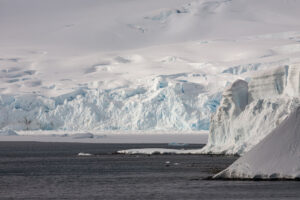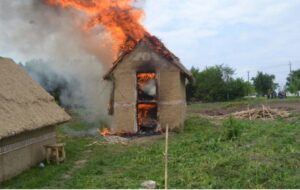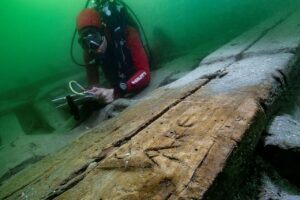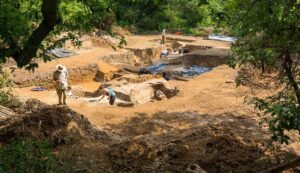Europe’s summer-long heat and drought have had one positive consequence. Lower water levels in lakes, rivers, and coastal areas have exposed long-sunken treasures.
Rome’s historic Tiber River now shows ruins built during Nero’s reign. Water levels on the Tiber have plummeted more than a metre in the last year, to a record low, exposing the remains of what might be the Nero Bridge.
Built by the Roman emperor Nero, who reigned from 54 AD until he killed himself in 68 AD, the bridge connected the Field of Mars with Tiber’s opposite bank. It led to Nero’s Circus on Vatican Hill.
A controversial sovereign, Nero was celebrated for building public structures and winning military victories abroad. But his darker side saw a man who focused on art, music, and chariot races rather than politics. He killed his mother and at least one of his wives. The Nero Bridge was destroyed at the end of the Western Roman Empire. It has lain buried in the Tiber River ever since.
Dispute over the bridge’s origins
Some historians, however, dispute that it is the remains of Nero Bridge.
“The origins of the bridge are uncertain, given that it is likely a bridge existed here before Nero’s reign and therefore the Pons Neronianus [Nero Bridge] was probably a reconstruction of an earlier crossing,” said Nicholas Temple, professor of architectural history at London Metropolitan University.
In any case, the ancient brick now high and dry above a green riverbed is a stark reminder of climate change.

A World War II barge. Photo: Luca Bruno/AP
The Nero Bridge isn’t the only ancient emergence as a result of Europe’s severe drought. In northern Italy, World War II shipwrecks have emerged from the River Po, the country’s longest river.
The Po flows 652km from the northwestern city of Turin to Venice. In a section near the central northern village of Gualtieri, a 50m-long barge called the Zibello lies beached. It once transported wood during World War II and sank in 1943.
In recent years, the boat’s rusted bow became visible. But this past spring, even before the major heatwave settled in, the rest of the vessel erupted from the waters.
Worst drought since the 1950s
This is the worst drought in the region in more than 70 years. Rain hasn’t fallen in more than 100 days.
“We are in a situation where the river flow is approximately 300 cubic metres per second here in [the riverside village of] Boretto, while normally in this area we have almost 1,800 cubic metres,” explained Meuccio Berselli, secretary general of the Po River Basin Authority.
More World War II relics now jut out of the sand around the Po, including a tank that German troops pushed into the water in 1945. As the drought continues, more relics from the past are sure to emerge.
The Po valley experienced droughts in 2007, 2012 and 2017. Scientists agree that the climate crisis lies behind their growing prevalence.






